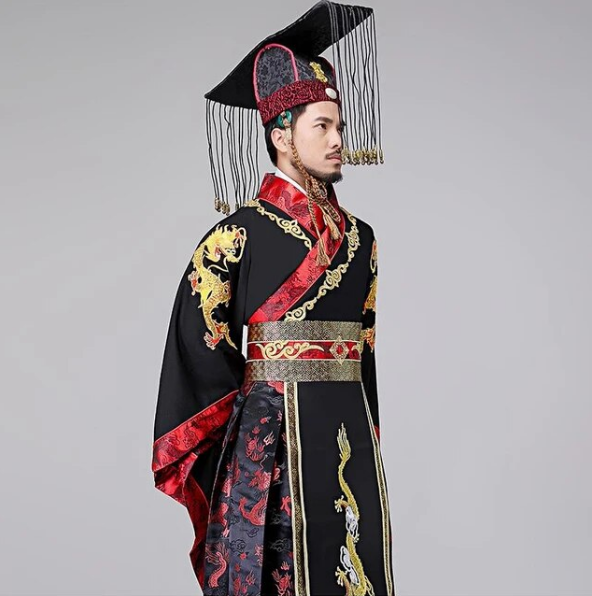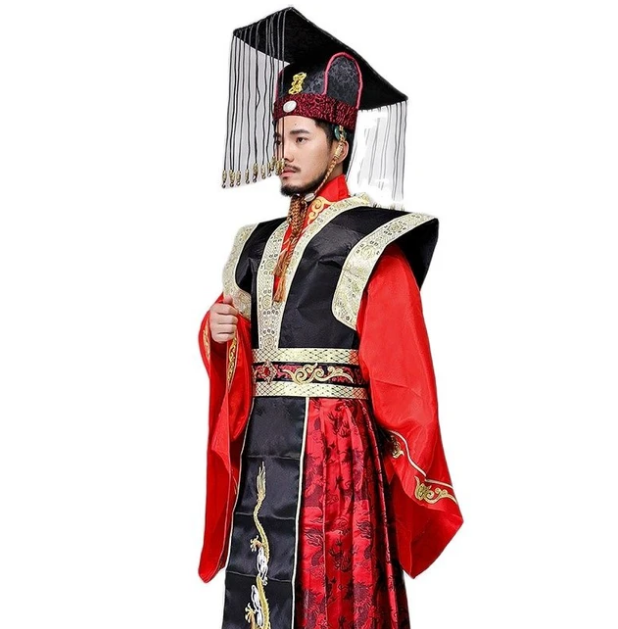Origins and Evolution of Hanfu in the Qin Dynasty
Historical Background of Qin Dynasty Attire
Tracing back to the dawn of the Qin Dynasty, Hanfu emerged as a distinctive form of dress. This era, pivotal in Chinese history, saw the unification of China under Emperor Qin Shi Huang. The period’s political and cultural shifts greatly influenced the attire. Hanfu, initially simple in design, began incorporating elements reflecting the dynasty’s growing power and prestige. The use of luxurious fabrics like silk, prevalent during this time, symbolized wealth and status. Additionally, the colors and patterns in Hanfu often held significant meanings, aligning with the Qin Dynasty’s emphasis on order and hierarchy.

Evolutionary Trends of Hanfu during the Qin Era
As the Qin Dynasty progressed, Hanfu evolved significantly. Initially, garments were practical and modest, catering to the needs of a society focused on agriculture and warfare. Over time, with the expansion of the empire and exposure to diverse cultures, Hanfu designs became more elaborate. This period witnessed the introduction of intricate embroideries and layered clothing, reflecting the dynasty’s growing artistic sensibilities. The trend towards longer robes and wider sleeves indicated a shift from purely functional attire to one that emphasized aesthetic appeal and social status. The evolution of Hanfu during the Qin Dynasty laid the foundation for future Chinese fashion, marking a transition from simplicity to sophistication.
Style and Characteristics of Qin Dynasty Hanfu
Basic Styles of Qin Dynasty Clothing
In the Qin Dynasty, the Hanfu style prominently featured cross-collared robes, tied with a sash. The clothing often consisted of a two-piece set: a Yi, a narrow-cuffed, knee-length tunic tied with a sash, and a Shang, a long skirt. The attire was typically made from silk, reflecting the dynasty’s advancements in sericulture. Men and women both wore similar styles, although the length and decoration varied based on social status. The emphasis was on straight lines and a structured fit, aligning with the Qin Dynasty’s values of order and uniformity.
Significance of Decorations and Symbols
Decorations on Qin Dynasty Hanfu were not merely ornamental but carried deep symbolic meaning. Colors played a crucial role; for instance, black, representing water in Wu Xing (the Five Elements), was esteemed as the royal color. Dragons, phoenixes, and other mythical creatures often adorned the robes of royalty, symbolizing power and divine favor. Common people were restricted in the use of these symbols, reflecting the strict social hierarchy. The use of gold threads and intricate patterns in embroidery indicated wealth and status. These decorations and symbols were essential in conveying the cultural values and social order of the Qin Dynasty.
Differences in Hanfu for Men and Women
Characteristics of Men’s Attire in the Qin Dynasty
During the Qin Dynasty, men’s Hanfu was both functional and symbolic. It typically featured a Yi, a narrow-cuffed, straight-sleeved tunic, and a Shang, a type of skirt. The length and fabric of the Yi varied based on the wearer’s social status. High-ranking officials often wore longer tunics with wider sleeves, made of finer silk. Additionally, colors like black and dark blue, symbolizing masculinity and solemnity, were prevalent in men’s clothing. The simplicity and structure of men’s Hanfu reflected the Qin Dynasty’s focus on military efficiency and social order.
Stylistic Elements of Women’s Clothing in the Qin Era
Women’s Hanfu in the Qin Dynasty displayed more variety and intricacy than men’s. While also consisting of a Yi and a Shang, women’s clothing often featured softer silks and lighter colors, like pastels. The sleeves were typically wider, and the skirts longer, reflecting a more elegant and graceful aesthetic. Embroideries of flowers and birds, symbolizing femininity and beauty, were common in women’s attire. These elements of women’s Hanfu highlighted the era’s appreciation for delicate beauty and the distinct role of women in society.
Craftsmanship of Qin Dynasty Hanfu
Primary Fabrics and Materials Used
In the Qin Dynasty, silk was the predominant fabric for Hanfu, showcasing China’s advanced sericulture. The silk varied in quality and texture, depending on the wearer’s social status. Royalty and nobility often adorned themselves in finer, more lustrous silk, while commoners used coarser grades. Other materials like hemp and linen were also in use, primarily for lower-class clothing. The choice of fabric played a crucial role in comfort, status symbolization, and the garment’s overall aesthetic.
Techniques and Artisanship in Garment Making
The craftsmanship of Qin Dynasty Hanfu was a testament to skilled artisanship. Tailors employed various techniques, including intricate stitching and precise cutting, to ensure a perfect fit. Embroidery, a key element, involved detailed handwork, often depicting cultural symbols and nature motifs. Dyeing was another critical process, with colors like black, red, and blue being popular choices. These techniques required immense skill and patience, reflecting the era’s appreciation for fine craftsmanship in clothing production.
Social Hierarchy and Clothing
Dress Variations Across Social Classes
In the Qin Dynasty, clothing distinctly reflected social hierarchy. Emperors and high-ranking officials often wore elaborate Hanfu made of the finest silk, featuring vibrant colors like red and purple. These garments were adorned with intricate designs, symbolizing power and status. In contrast, commoners wore simpler, more functional Hanfu, typically made from hemp or coarse silk. Their colors were more subdued, often in shades of blue or gray, indicating their lower social standing. The differences in fabric quality, color, and ornamentation clearly delineated the social classes.
Role of Clothing in Signifying Identity and Status
Clothing in the Qin Dynasty served as a powerful indicator of identity and status. For instance, the length of a robe or the width of a sleeve could signify the wearer’s rank within the social hierarchy. Officials had specific dress codes, with certain colors and patterns reserved for different ranks. Accessories like belts and hats also played a crucial role in denoting status. This strict dress code reinforced the social order and made the distinction between classes visually evident.

Influence of Qin Dynasty Hanfu on Modern Fashion
Integration of Ancient Clothing Elements in Modern Fashion
Modern fashion often draws inspiration from the Qin Dynasty’s Hanfu. Designers incorporate elements like cross collars, wide sleeves, and flowing silhouettes into contemporary clothing. These traditional aspects blend with modern fabrics and patterns, creating a fusion of ancient elegance and modern style. The use of silk, once a symbol of nobility in the Qin Dynasty, remains popular in high-fashion designs today. This integration highlights a reverence for historical aesthetics while adapting them to contemporary tastes.
Impact on Contemporary Culture and Arts
The influence of Qin Dynasty Hanfu extends beyond fashion into broader contemporary culture and arts. In film and theater, costumes inspired by Hanfu are common, offering a visual connection to historical narratives. Artists and designers frequently reference the dynasty’s clothing styles, colors, and patterns, showcasing their lasting impact. This cultural integration demonstrates how the elegance and symbolism of Qin Dynasty attire continue to resonate in today’s artistic expressions.